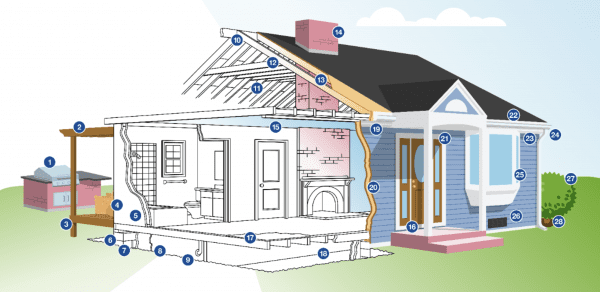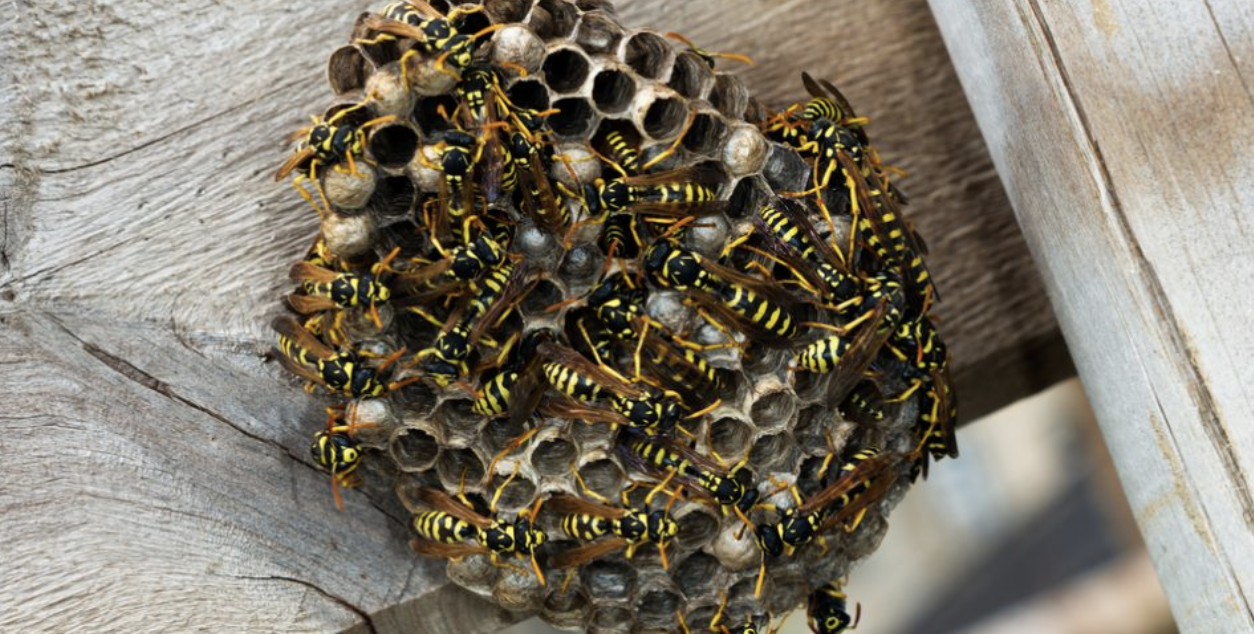Home

Fall is the season when stinging bugs thrive in numbers and are at their most active. The most common stinging bugs people will encounter are wasps and hornets. While most of them are active outdoors, some may invade homes.
Common Nesting Sites Around the Home
Management of stinging pests starts with identifying their nesting sites, harborage locations, and entry points to the home. The following diagram and corresponding table, developed by BASF, shows the common nesting sites around the home.

Supplied by BASF
List of Common Nesting Sites Around the Home
| 1-10 | 11-20 | 21-28 |
|---|---|---|
| 1. BBQ island | 11. Inside the attic | 21. Porches and entryways |
| 2. Pergola | 12. Under roof deck | 22. Around rain gutter |
| 3. Deck | 13. Under roof paneling | 23. Eaves and soffit |
| 4. Patio furniture | 14. In and around chimney | 24. Around gutter downspouts |
| 5. Inside wall void | 15. baseboard and ceiling | 25. Around window |
| 6. Hollow block | 16. Around doorway | 26. Crawlspace vent |
| 7. Weep hole | 17. Under floor | 27. Shrubs and trees |
| 8. Styrofoam insulation | 18. In wood-soil contact | 28. Mulch |
| 9. Utility line insulation | 19. Fascia | |
| 10. Padded ceiling insulation | 20. Under outdoor siding |
Non-chemical Control
Removing a nest is often recommended as a non-chemical control option for stinging bugs. This removal should be done after dark when the bugs have returned to the nest and are less active. When doing this, people should always should wear protective clothing, a hat, and glasses. Larvae in the nests can be killed by smashing or crushing. Keep in mind that wasps and hornets are predators of other pests. Adults that lose their nest will be forced to search for new locations. If there is a large number of wasps or the nest is big, seek assistance from professionals.
Chemical Control
It is advised to leave chemical control options to the professionals. They will have the knowledge on what products to use and how to use them safely.
There are products labeled for indoor use and outdoor use. For example, aerosols, including PT® Fendona, can be applied indoors for a quick knockdown. Fendona is an oil-based product that can potentially stain or dissolve materials such as Styrofoam insulation, so it should be tested on a sample material first.
Some aerosols can be applied from several feet away to target directly on the sting bugs to minimize the risk of stings. An example of one of these products is PT® Wasp-Freeze. This chemical can only be used in attics, crawlspaces, and outdoor areas, such as chimneys and decks. This aerosol may stain asphalt roofing shingles, so testing a sample area first is recommended. To treat nests that are in the ground, decks, pergolas, or fasciae, dust products are recommended. An examples of a dust product is Alpine® Dust.
Trade and brand names used in this publication are given for information purposes only. No guarantee, endorsement, or discrimination among comparable products is intended or implied by the Alabama Cooperative Extension System.

